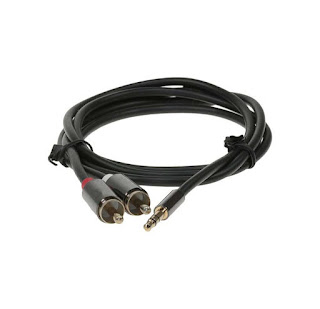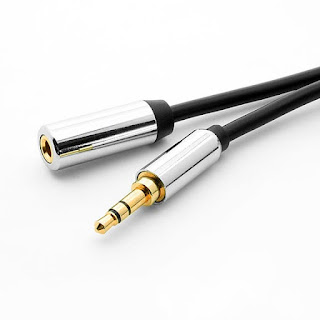Most of us like sharing our things. It is our way of showing love and care. The same goes for music. People desire to share music with their loved ones and family friends, and sometimes, they want to share it from the same mobile phone and headphones.
This desire and demand from customers led to the birth of audio splitters.
The advancements in technology gave birth to audio cable splitters, and so, today we can share our favorite movies, music and lot of things with our friends and loved ones from the same mobile, tablets, etc.
Let's get into the basics of Audio splitter:
It is a small device that outputs the music into different headphones or earphones simultaneously. It aims to direct the music in two different headphones without affecting the sound quality.
They are also known as dual headphone adapters, they make it easy to connect two or more headphones, speakers, earphones, etc. into a single audio jack.
Are you wondering how can you connect more than one headphone with 3.5mm cable?
It's the audio cable!
Well, that's not all. In fact, you can even connect the 2.5mm audio jack to 3.5mm audio jack with the help of 2.5mm to 3.5mm audio cable. This 2.5mm to 3.5mm audio cable can be a savior when you are facing a different port and cable situation
That's a lot of cables, especially when dealing with a cable with a confusing name of 2.5mm to 3.5mm audio cable. but the experience of sharing makes all of it worth it.
Anyhow, let's get back to audio cable splitters.
Audio cable splitter contains a singular plug with multiple audio jacks. Using it, you can connect multiple headphones or microphones. But, when it comes to choosing audio splitters you need to choose the right one so that you don't miss on the audio quality.
Going further, let's understand the difference between Microphone Splitter and Headphone Splitter:
Splitters are confusing for beginners. The basic function of these splitters is to split the sound.
But, when talking about input/output, the headphone splitter splits the output sound. It will help you direct the sound into phones, laptops, PCs, and iPods.
Whereas, microphone splitter has the feature of an amplifier. It splits the output as well as input sounds. There is a resistance, which affects the input and the output of the microphone.
The headphone splitter does not need an amplifier, but the microphone splitter needs the amplifier to work.
Headphone splitters are known as passive splitters because they do not need a power source. Whereas, microphone splitters are known as active splitters because they require a power source.
Let's look at some of the basic things you need to consider before purchasing:
Headphones are gaining popularity for a long time now. Even after the invention of wireless and Bluetooth headphones, headphones are the preferred choice for music fanatics because of the quality. This makes audio splitter a must-have item in your music arsenal. So, before purchasing splitters consider the following steps:
- Decide type of splitter:
-
The first thing while purchasing a splitter is to consider which type of splitter you want. There are dual splitter as well as a multi splitter available in the market.
But, the one you should purchase depends on the usage. You need to consider the number of people with whom you will be sharing the music and then finalize your choice.
- Audio Mixing:
-
There are some audio splitters which provide the audio mixing options. So, while you consider the audio splitter with this feature, make sure that you are sharing your music with the correct person.
I would recommend you to consider the earphone splitters instead of headphones. Because they are a good option for everyday use providing good sound quality.
- Headphones or Headsets: Which to Buy?
-
There is always a bit of confusion in choosing between headphones or headsets. It depends on you whether you want to purchase a splitter that supports only headphones or it supports microphones.
While on the other hand, there are no specifications on headset splitters. The requirement of an audio splitter is just that it requires the right plug size which is 3.5mm so that it can work effectively.
Let us show you the five types of splitters you can consider:
- 6-Way Snowflake Shaped Headset Hub:
-
This splitter has six ports. One of them is for the audio source plug. While you can use other five ports with your friends and family.
- Dual Headphone Jack:
-
It has a Y shape with a 3.55mm male jack. You can connect it with any port and use it.
- 5 Jack Audio Splitter:
-
With the 5-jack audio, you can share with multiple people and don't have to worry about sound quality.
- 3.5mm Stereo Audio Jack Adapter:
-
It has a male plug connected with a 7 inches long cable to a 3.55mm female port.
- 3.5mm Y-Splitter Cable Adapter:
-
This Y splitter is perfect to share your headphones. It consists of a 3.5mm male plug that supports a smartphone or computer and its further splits in Y shape two female ports.
Conclusion:
I know working with cables especially with weird names like 2.5mm to 3.5mm audio cable and understanding them is difficult. But, nowadays it is important to have at least the basic understanding of them.
Hence, depending on your usage you can finalize the type of an audio splitter you want that can help you share your music with your friends and loved ones.

 Log in with Facebook
Log in with Facebook 








